Physical Therapy for Knee Pain
Knee pain is a common condition affecting 1 in 4 adults. It can be caused by disease, overuse, or trauma. It occurs in all age ranges and with varying levels of activity. Thousands of steps, stairs, and twists to the knee over time can cause changes to cartilage and other parts of the knee. There are a few diagnoses that are more commonly seen. At Symmetry Physical Therapy our goal is to provide an exceptional patient experience at each visit! We recognize that recovery is a multifactorial process. Here is a little insight into how we rehab our knee patients in Miami!
What is Causing My Knee Pain?
This is identified during the initial evaluation. A comprehensive health history will help to provide a clear understanding of the injury. Typical questions include:
- When did the injury start?
- How did the injury start?
- What treatment have you tried so far?
Also be mindful of your symptoms to give the most accurate information possible. Paying attention to the following.
- Where does my knee hurt?
- How much does my knee hurt?
- When does my knee hurt?
- How does it feel like?
- What makes my knee pain worse?
- What makes my knee pain better?
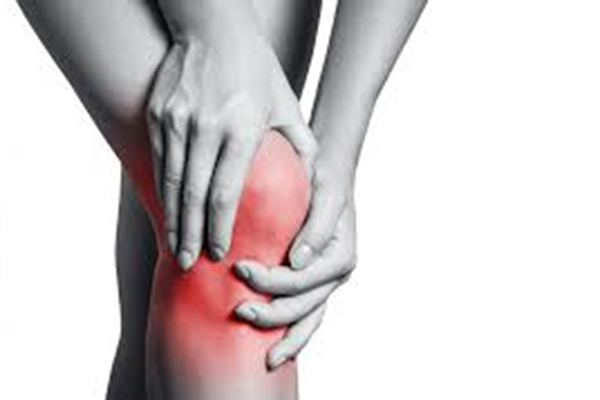
How the Initial Physical Therapy Exam for Knee Pain Look Like?
First up is the physical examination. Here your physical therapist will inspect the knee looking for obvious signs of swelling, bruising, or discoloration. We look for specific tenderness along certain muscles, tendons, and bones based on our expertise in anatomy. Depending on where the tenderness is, they will be able to determine the origin of the pain. They will look at the range of motion, strength, balance, and your ability to walk, and squat. Finally, they will complete a series of special tests used to help identify specific structures that may be involved.
What Are Some Common Knee Pain Conditions that You Treat?
There are a variety of different knee injuries that could cause and contribute to knee pain. The four most common conditions are: patellar femoral pain syndrome, anterior cruciate ligament (ACL) sprain, meniscus injury, and knee osteoarthritis.
Physical Therapy for Patella Femoral Pain Syndrome
Patellar femoral pain syndrome, PFPS, describes pain in the front of the knee and around the patella, or kneecap. Many refer to it as “runner’s knee” or “jumper’s knee” because it is common in sports. Studies suggest that PFPS results from doing too much too soon. This does not allow the body to recover and results in inflammation, and pain. PFPS rarely gets better on its own. Physical therapy is a successful way to approach recovery. Working with a physical therapist to improve strength, flexibility, and the quality of your movements is important to recovery.
Physical Therapy for ACL Injuries
An anterior cruciate ligament (ACL) tear is a common injury affecting athletes but can also occur in non-athletes. The ACL is one of the major ligaments that connects your shin bone (tibia) to your thigh bone (femur). It can tear if you:
- Twist your knee while keeping your foot planted on the ground.
- Stop suddenly while running.
- Suddenly shift your weight from one leg to the other.
- Jump and land on an extended (straightened) knee.
- Stretch the knee farther than its usual range of movement.
- Experience a direct hit to the knee.
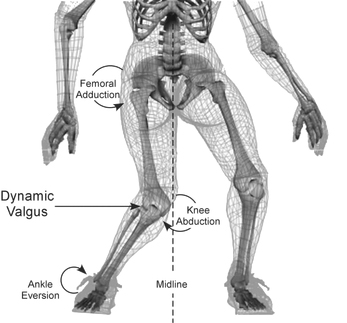
Rehabilitation following this injury is especially important to regain range of motion, strength, and return to a prior level of activity. A Physical Therapist will create an individualized plan that is tailored towards your needs.
Physical Therapy for Meniscal Tears
Meniscal tears are common injuries to the cartilage of the knee that can affect athletes and nonathletes alike. The meniscus is a cartilage structure that plays an important role in weight bearing. Injuries to the meniscus can either be acute, meaning they occur because of a particular event, or degenerative meaning they happen over time. Your Physical Therapist will conduct an evaluation to determine the type of injury and create an individualized plan to get you back and recovered.
Physical Therapy for Knee Osteoarthritis (OA)
Finally, the last most common condition is knee osteoarthritis (OA). Arthritis is a condition in which the protective tissue at the ends of the bones (cartilage) gradually wears down and worsens over time. This can result in pain, swelling, loss of range of motion, and strength. Physical Therapy is a effective treatment for this condition. So, click here to schedule an appointment to see us and get on the road to recovery!
What will my physical therapy sessions look like? Every patient visit in our Downtown Miami/Brickell location we strive to give the most exceptional experience. Click here to learn more about how we do just that. An individualized plan will be created to target the cause of the problem following the assesment. Education is a crucial component. If you don’t properly understand the problem and what to expect the road to recovery becomes fuzzy. Your physical therapist will give information about the condition, how long it will take to recover, and what to do at home. A progressive exercise program will likely be included based on the findings of the initial assessment. This will help to improve weakness, inflexibility, loss of endurance, and poor balance.
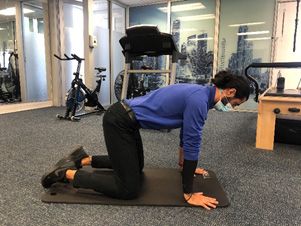
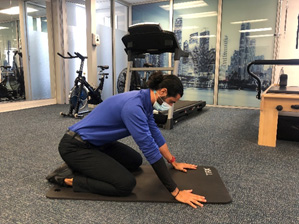
Hands-on care is also an especially important part of recovery. This may be either some soft tissue massage or joint manipulation. Your therapist will select specific joint mobilizations to perform based on your exact symptoms.
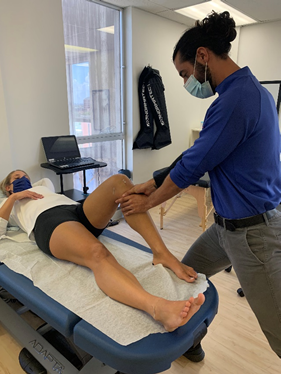
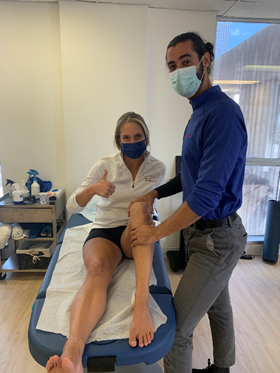
We look forward to getting you back to being your best you! Click here to begin the journey and hope to see you soon!
